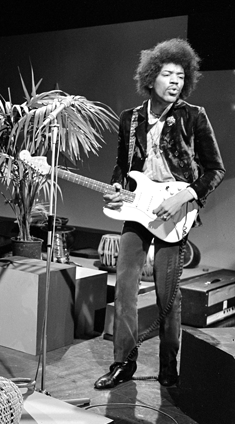Cover version facts for kids

A cover version (or simply "cover") is a song that a different singer or band records after another artist has already released it. Sometimes, the new version sounds very similar to the original. Other times, it can sound completely different!
Many songs become more famous as cover versions than their first recordings. For example, Paul Revere & the Raiders recorded "Louie, Louie" and "(I'm Not Your) Steppin' Stone." But these songs became bigger hits for other bands, The Kingsmen and The Monkees.
Some songs are covered so many times by different artists that they become "standards." This means they are well-known and loved by many. "Without You" was first written by Badfinger. It was later covered by Harry Nilsson and then by many other singers, including Mariah Carey. Songs like "Yesterday" and "Something" by The Beatles are also famous standards.
Contents
What is a Cover Song?
A cover song is when a musician performs or records a song that was first made famous by someone else. It's like taking a favorite recipe and adding your own special ingredients to make it unique. Artists might change the style, the instruments, or even the speed of the song.
Why Do Artists Make Covers?
Artists create cover songs for many reasons:
- To honor other artists: They might love the original song and want to show respect to the artist who first sang it.
- To learn and grow: Playing familiar songs helps musicians learn new styles and improve their skills.
- To entertain fans: Audiences often enjoy hearing new versions of songs they already know and love.
- To make a song their own: Sometimes, an artist can make a cover song even more popular than the original!
A Look Back at Cover Songs
The idea of a "cover" has been around for a long time. In the past, before the mid-1900s, people didn't always think of one version of a song as the "original." Music was often a live event. If you liked a song, you might buy the sheet music and play it yourself. The goal was for many artists to perform a song, making the song itself famous, not just one performer.
In the 1950s, things started to change. Musicians began to play cover versions as a way to pay tribute to the original artist. It was also a great way for artists to show off their skills by performing popular tunes. Many early albums included a mix of new songs and well-known "standards" to show what the artist could do.
Types of Cover Artists Today
Today, there are three main types of performers who often play cover songs:
Tribute Bands
Tribute bands are groups that focus on playing the music of one specific artist or band. They try to sound and even look like the original group. It's like going to a concert of your favorite band, even if the original members don't perform anymore!
- Examples:
* Björn Again plays songs by ABBA. * Led Zepagain performs music by Led Zeppelin. * The Fab Four brings The Beatles' music to life. * Australian Pink Floyd Show plays songs by Pink Floyd. * the Iron Maidens cover songs by Iron Maiden.
Some tribute bands add their own twist. Dread Zeppelin plays Led Zeppelin songs in a reggae style. Beatallica mixes songs by The Beatles and Metallica into heavy metal versions. Sometimes, a member of a tribute band even joins the original band they admire! For example, Tim "Ripper" Owens, who was in a Judas Priest tribute band, later became the lead singer for Judas Priest itself.
Cover Bands
Cover bands play a wide variety of popular songs. They often perform at parties, weddings, or in bars. Their goal is to play songs that everyone knows and loves, so people can sing along and have fun. They might play current hits or popular songs from past decades.
Many cover bands use computer screens to display lyrics. This helps the singer remember a huge number of songs, so they can play almost any request!
Revivalist Artists
Revivalist artists are inspired by a whole style of music, not just one band. They want to bring old music genres back to life and introduce them to new, younger audiences. For these audiences, the music feels fresh and exciting, not just nostalgic.
- Examples:
* Sha Na Na started in 1969 to celebrate doo-wop music from the 1950s. * The Blues Brothers began in 1978 to honor blues, soul, and R&B music from the 1950s and 1960s. They saw themselves as bringing this music to new fans. * The Black Crowes formed in 1984, aiming to revive the blues-rock sound of the 1970s. They later started writing their own songs in that style.
Copyright and Cover Songs
In the United States, musicians have the right to record a cover version of a song that has already been released. This is thanks to the Copyright Act of 1909.
When an artist records a cover, they usually pay a small fee, called a "royalty," to the person who wrote the original song. This is handled through special organizations like the Harry Fox Agency. This system makes sure that songwriters get paid for their creations, even when other artists perform them.
The person who wrote the song gets to decide who releases the very first recording of it. But after that first recording is out, anyone can record their own version by paying the royalty.
When songs are performed live, like at a concert, the artists also pay fees to organizations like ASCAP or BMI. These groups make sure that songwriters and composers are paid when their music is performed publicly.
See also
In Spanish: Versión (música) para niños

